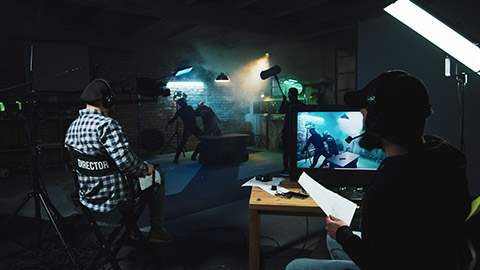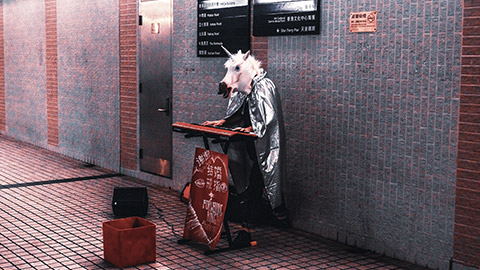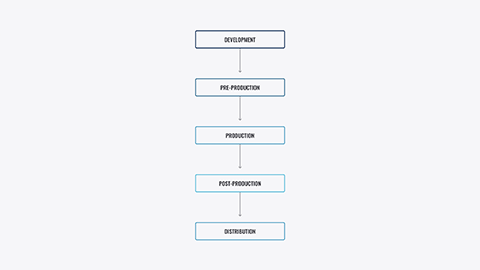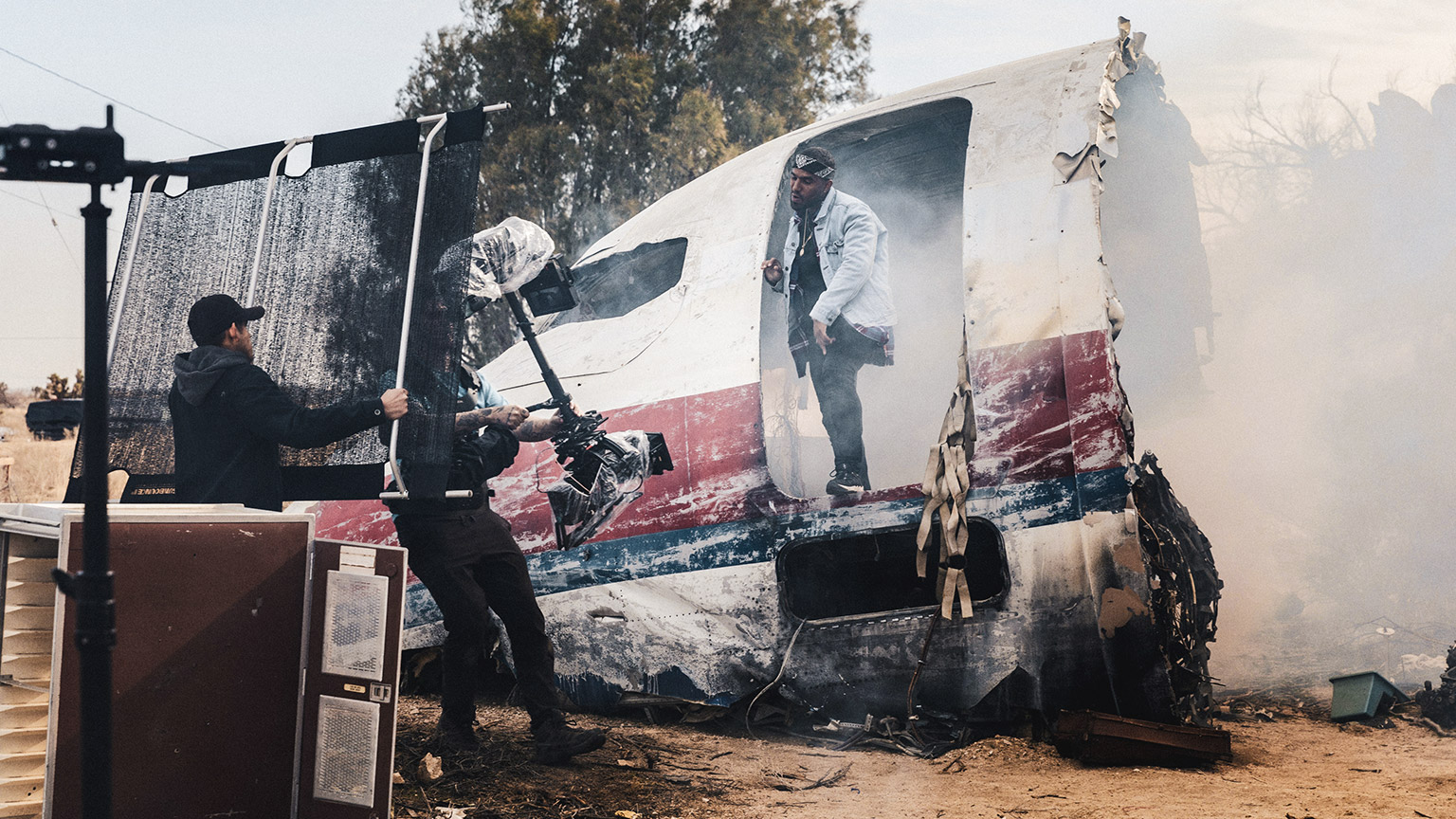'Many hands make light work'--and that is the case in the film industry. Let’s explore the many important roles that contribute to turning a vision into a masterpiece.
Do you ever wonder what goes on behind the scenes of making a movie? Who is involved? How does it all come together?
While every production is different, there are always several people working behind the camera to ensure the writer's vision comes to life.
Crew departments
The following list provides a breakdown of each of the major crew departments, the most common positions within each, and the hierarchy.
| Directorial |
Director 1st Assistant Director 2nd Assistant Director 3rd Assistant Director Script Supervisor |
|---|---|
| Production |
Producer Executive Producer Production Manager Location Manager Production assistants |
| Camera |
Director of photography 1st Assistant Camera 2nd Assistant Camera Video Assistant |
|
Grip and Electric (G&E) |
Key Grip Best Boy Gaffer |
| Art |
Production Designer Art Director Costume Designer Makeup Artist Props Master Set Builder/Decorator |
| Sound |
Boom Operator Sound Recordist Sound Mixer Sound Assistant |
| Post |
Editor Editing Assistant Colourist Sound Designer Post-producer VFX Supervisor |
Why is the sound department important?
Movies are 50 per cent of what you see and 50 per cent of what you hear.George Lucas
Every movie has 4 sonic elements:

Dialogue
- Direct sound
- Voice of characters
- ADR (Additional Dialogue Recording)
- Usually on the first layer of audio in the timeline
ATMOSphere
Close your eyes. Hold your breath. What do you hear?
- Ambience and/or atmosphere
- Movies sound dead without it
- Usually on the second layer of audio in the timeline
Sound FX
- Sound effects
- What you see is not exactly what you get
- Usually in the third and fourth layers in the timeline
Music
- Musical track not ‘soundtrack’
- Usually the last sound layer in the timeline

Producer
Who is the producer?
- CEO of a production company
- The owner of the film
- The 'money person'
- Decision maker
- Head of the project
Responsibilities:
- Administrate the project.
- Make sure the project meets the deadline.
- Get the right people for the project.
- Control money and time.
- Do what is best for the project.
- Make sure the project goes through all the stages of production in a healthy manner.
Art Department
Key people:
- Production Designer
- Art Director
- Props Master
- Costume Designer
- Makeup Artists
- Set Builder/Decorator
Key responsibilities:
- Plan a colour palette for the film together with the director and director of photography.
- Define a style and aesthetic for the film.
- Provide key visual elements that will help tell the story in a better way.
- Make the universe of the movie feel believable.
Wardrobe

Key people:
- Costume Designer
- Costume Coordinator
- Shopper
- Wardrobe Supervisor
- Tailors
Key responsibilities:
- Get clothes that will fit all talent in a comfortable way.
- Prepare all clothing to pass on the idea of an era.
- Design visual elements on the clothing that will help build the characters.
- Make sure all wardrobe is in order and that all characters have what's necessary to wear in all scenes.
- Keep track of continuity regarding the wardrobe.
The Makeup Crew
Key people:
- Makeup Artists
- SFX Makeup
- Modellers/Sculptors
- Character Artists
- Hairstylists
Key responsibilities:
- Make sure talent does not 'shine' on camera.
- Provide character customisation.
- Make sure all talent presents a constant look throughout the film.
The Props Department
Key people:
- Props Master
- Standby Props
- Props Maker
- Shopper
Key responsibilities:
- Help build characters using unique props and accessories.
- Keep track of all objects for continuity.
- Make sure all objects fit the era in which the film takes place.
- When working with weapons, make sure they are harmless yet believable.
The Sound Department
Key people:
- Boom Operator
- Sound Recordist
- Sound Mixer
- Sound Assistant
Key responsibilities:
- Recording all sound during filming.
- Choice of microphones, sound recording devices and mixing audio signals.
- Creating sound effects within the film (e.g. explosions).
- Creating sounds to generate mood and feeling.
- Manage the overall sound post-production process.
The Post-production Department
Key people:
- Editor
- Editing Assistant
- Colourist
- Sound Designer
- Post Producer
- VFX Artist
Key responsibilities:
- Oversee the entire post-production process.
- Edit the shots together into a coherent film.
- Work with the director to make sure their vision is realised.
- Work closely with production accountant, supplying accurate information for cost reports.

The key stages in taking a film from an initial idea through to watching it on the big screen are listed below.
Development
The start of a project varies, but generally, this will need to begin with the development of a script.
- Research
- Brainstorm
- Concept
- Scriptwriting
- Moodboards
Pre-production
Pre-production is where all the planning takes place before the camera rolls. It sets the overall vision of the project.
- Securing cast and crew
- Working out the shoot location
- Testing equipment
- Rehearsing
- Planning
- Storyboarding
- Planning
Production – filming
During this phase, it is key to plan ahead of the daily shoot. The primary aim is to stick to the budget and schedule. Communication is key between all parties involved.
Post-production
The bulk of post-production activity consists of reviewing the footage and editing to assemble the movie.
- Backing up footage
- Organising the footage
- Editing
- Sound editing
- Colour correction
- VFX and motion graphics
- Exporting
Distribution
Once the film is completed, it must be distributed. This is how producers make their money. The film will go into the cinema and/or be distributed via various platforms such as Amazon Prime, Netflix and HBO. In order to reach this goal, they focus on the following process:
- Marketing
- Selling
- Presenting

